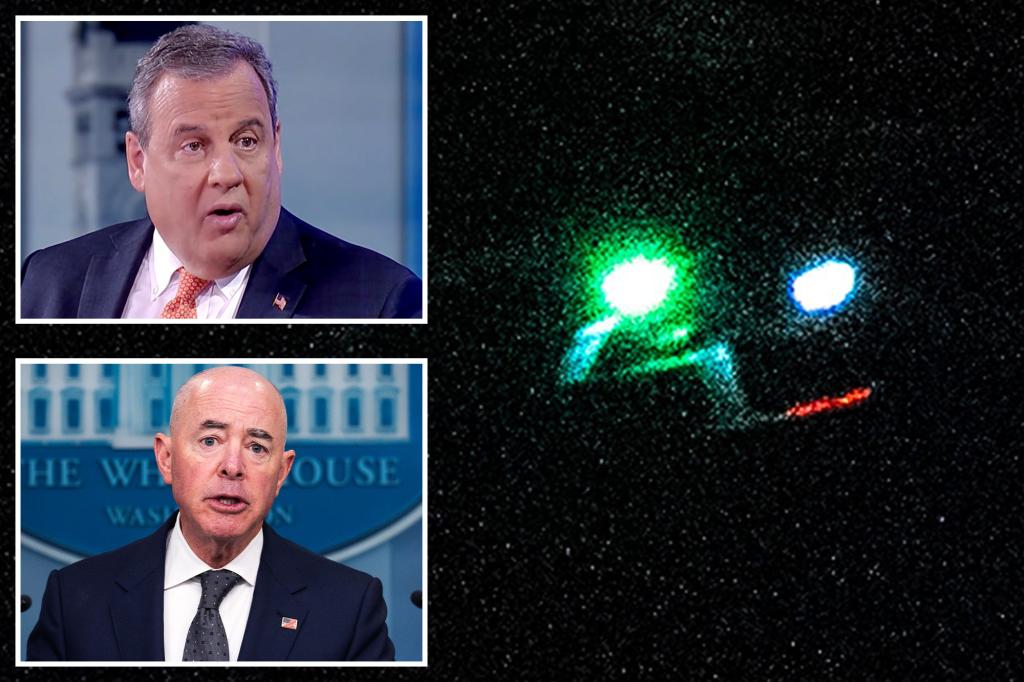The recent surge in drone sightings across New Jersey, New York, and other parts of the United States has sparked widespread public concern and fueled a whirlwind of speculation, ranging from mundane explanations to elaborate conspiracy theories. Former New Jersey Governor Chris Christie has emerged as a vocal critic of the federal government’s response, particularly targeting Department of Homeland Security Secretary Alejandro Mayorkas for what he perceives as downplaying the significance of these sightings and failing to provide sufficient information to the public. Christie’s central argument rests on the premise that the government’s lack of transparency has created a vacuum of information, allowing anxieties to fester and conspiracy theories to proliferate.
Christie’s frustration stems from the perceived disconnect between the official narrative and the lived experiences of residents who are witnessing these unusual aerial phenomena. He recounted personal anecdotes of constituents approaching him in public, expressing their unease and seeking answers about the drones. These individuals, feeling ignored by both state and federal authorities, are turning to alternative, often unsubstantiated, explanations to make sense of the situation. This underscores Christie’s concern that the lack of official communication is not only failing to allay public fears but is actively contributing to the spread of misinformation. He contends that the government has a responsibility to be more forthcoming with information, even if the full picture is not yet clear, to prevent widespread panic and distrust.
The crux of Christie’s criticism centers on Secretary Mayorkas’s assertion that the increased drone activity is not “unusual.” Christie vehemently refutes this claim, pointing to his own personal experience as a lifelong New Jersey resident who has never before witnessed such a prevalence of drones over his home. He argues that this statement, along with other seemingly dismissive remarks from officials, minimizes the legitimate concerns of citizens who are witnessing something out of the ordinary. This perceived disconnect between the official narrative and the public’s lived experience further fuels the sense of mistrust and suspicion towards the government’s handling of the situation.
Mayorkas, in his defense, has cited the sheer volume of drones operating daily across the United States and pointed to recent changes in FAA regulations that permit nighttime drone flights as potential explanations for the increased sightings. While these factors may contribute to the overall picture, they fail to address the specific concerns raised by Christie and others regarding the unusual patterns and behaviors of some of these drones. The lack of specific details about the nature of these sightings, their purpose, and the entities operating them leaves a void that is quickly being filled by conjecture and speculation.
Christie’s argument goes beyond simply demanding more information; he advocates for a fundamental shift in the government’s communication strategy. He believes that the Biden administration and state authorities need to be more proactive and transparent in their communication with the public. This includes not just providing factual updates on the drone activity, but also acknowledging the public’s concerns and outlining the steps being taken to address the situation. He stresses the importance of filling the information vacuum to prevent the spread of misinformation and restore public trust. This proactive approach, he argues, is essential to prevent further escalation of public anxiety and ensure that the government maintains its credibility in the eyes of its citizens.
The ongoing drone saga highlights a growing challenge in the information age: the rapid spread of misinformation and the difficulty of establishing a shared understanding of reality. In the absence of clear and consistent communication from trusted sources, the public is left to navigate a sea of conflicting narratives and often turns to less credible sources for information. Christie’s criticism of the government’s response underscores the crucial role of transparency and open communication in maintaining public trust and ensuring a sense of security in an increasingly complex and uncertain world. The drone sightings, while unsettling in themselves, also serve as a stark reminder of the importance of clear and consistent communication from authorities in an era of readily accessible information and rampant speculation.

